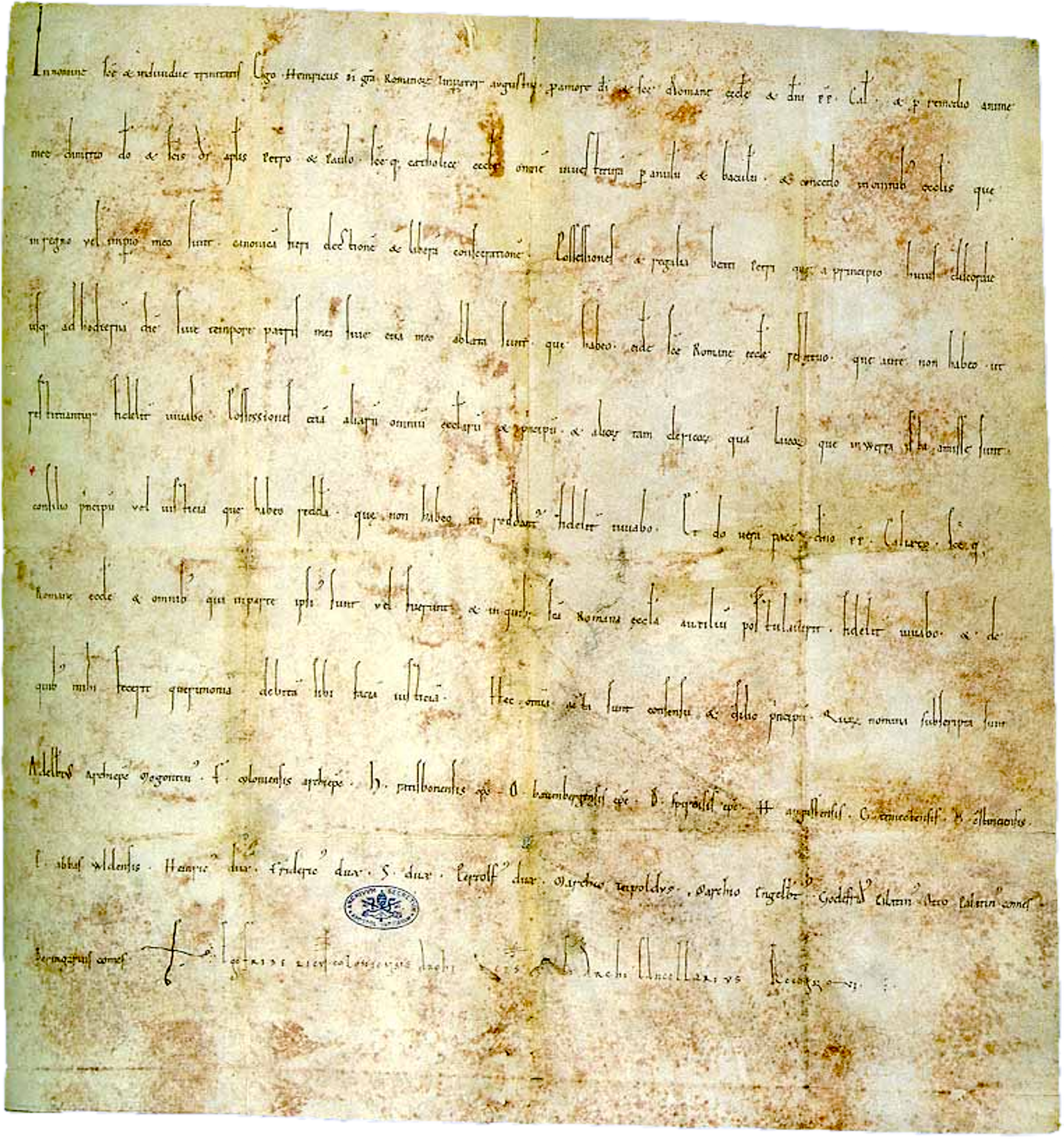|
Concordat Of Worms
The Concordat of Worms(; ) was an agreement between the Catholic Church and the Holy Roman Empire which regulated the procedure for the appointment of bishops and abbots in the Empire. Signed on 23 September 1122 in the German city of Worms by Pope Callixtus II and Emperor Henry V, the agreement set an end to the Investiture Controversy, a conflict between state and church over the right to appoint religious office holders that had begun in the middle of the 11th century. By signing the concordat, Henry renounced his right to invest bishops and abbots with ring and crosier, and opened ecclesiastical appointments in his realm to canonical elections. Callixtus, in turn, agreed to the presence of the emperor or his officials at the elections and granted the emperor the right to intervene in the case of disputed outcomes. The emperor was also allowed to perform a separate ceremony in which he would invest bishops and abbots with a sceptre, representing the imperial lands associated ... [...More Info...] [...Related Items...] OR: [Wikipedia] [Google] [Baidu] |
